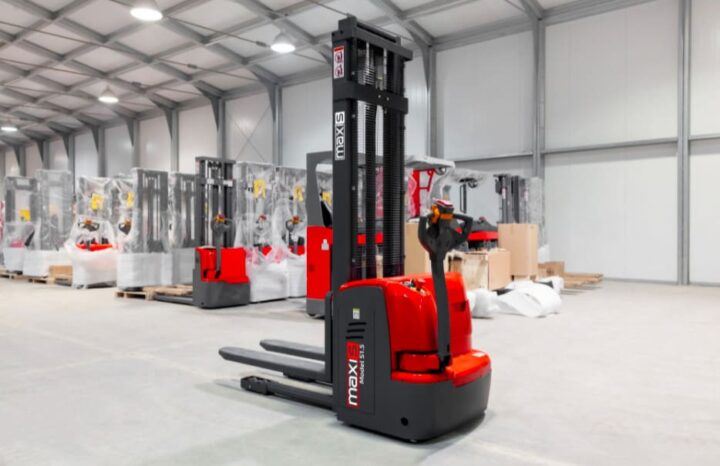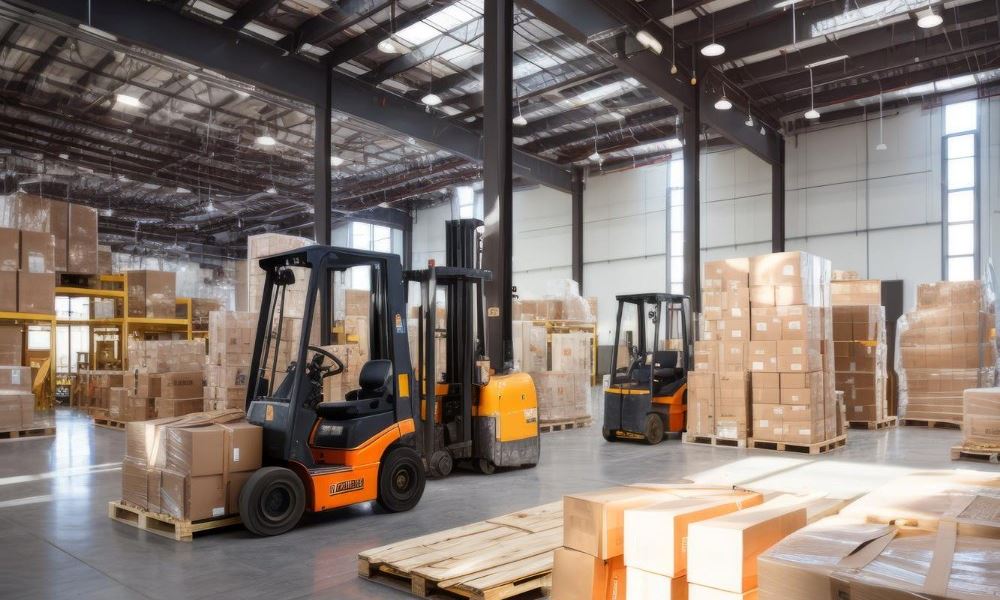Advantages and features of using stackers with and without counterweight
In warehouses, production and logistics enterprises, stackers provide convenient and safe transportation, stacking of goods at a height. An important criterion when choosing this warehouse equipment is the presence or absence of a counterweight. Stackers with and without a counterweight have their own features and advantages that determine their use in different conditions.
Advantages of stackers with a counterweight
The purpose of the counterweight is to ensure the stability of the machine and protect it from tipping over when lifting and moving the load. A battery or a massive metal block placed behind the mast acts as a counterweight. The non-counterweight stacker design uses support brackets on rollers mounted under the forks for stability.
The design of a stacker with a counterweight has important advantages:
- Lifts all types of pallets, including non-standard ones.
- You can drive up close to the car from any side.
- Lifts the load higher than similar load capacities of the model without a counterweight.
- Great resistance to overturning.
A stacker equipped with a counterweight can replace an expensive forklift if you have to work with placing palletized goods on racks. Its cost is half as much.
Advantages of stackers without counterweights
Trucks without a counterweight are more compact. It is easy to control and maneuver. It is ideal for use in limited spaces. In the narrow aisles between the racks, it has enough space, on average, 1 meter less than for equipment with a counterweight.
Another important advantage of stackers without a counterweight is economy. The design of these machines is simpler, less metal is used, so they are cheaper and pay off faster.
Features of using different types of stackers
Among the models of the two main types, you can choose the same nominal load capacity and lifting height. But it should be taken into account that they can completely replace each other, there are features of using stackers of different types.
Models without counterweights with supporting consoles due to their small size are more suitable for work between racks, multi-level stacking of pallets. A space of 2.3 to 2.7 m wide is enough for them to maneuver.
Machines equipped with a counterweight completely replace fork loaders if you need to move the load from the car to the rack or back. For the operation of a stacker with a counterweight, 2.7 to 3.3 meters are required between the racks.
This warehouse equipment is controlled by an operator who, depending on the design, accompanies it on foot, uses a special step, sits or is in the cab. Cars without seats and cabs are more compact and maneuverable. A multifunctional handle is used for control. They have a lower speed of movement, a shorter braking distance and, in general, higher safety.
How to choose a suitable stacker
The right choice of a stacker is possible taking into account several factors. Carrying capacity is in the first place among them. It makes no sense to buy equipment with a load capacity much more than the maximum weight of goods in the warehouse. Such equipment is more expensive and requires high maintenance costs.
Take into account the lifting height of the cargo, which should be 5-10 cm higher than the upper tier of the racking system. Maneuverability, which is important for working between racks, is evaluated, which is determined by the minimum turning radius of the machine.
They are interested in the size of the villages. In most models, they fit 1200x800 mm pallets. Models with elongated forks or the possibility of adjusting their width are less common. If necessary, work with non-standard goods may additionally require special grips.
When planning to buy a stacker, consider not only financial possibilities. Availability of service, availability of spare parts and consumables are also important.

